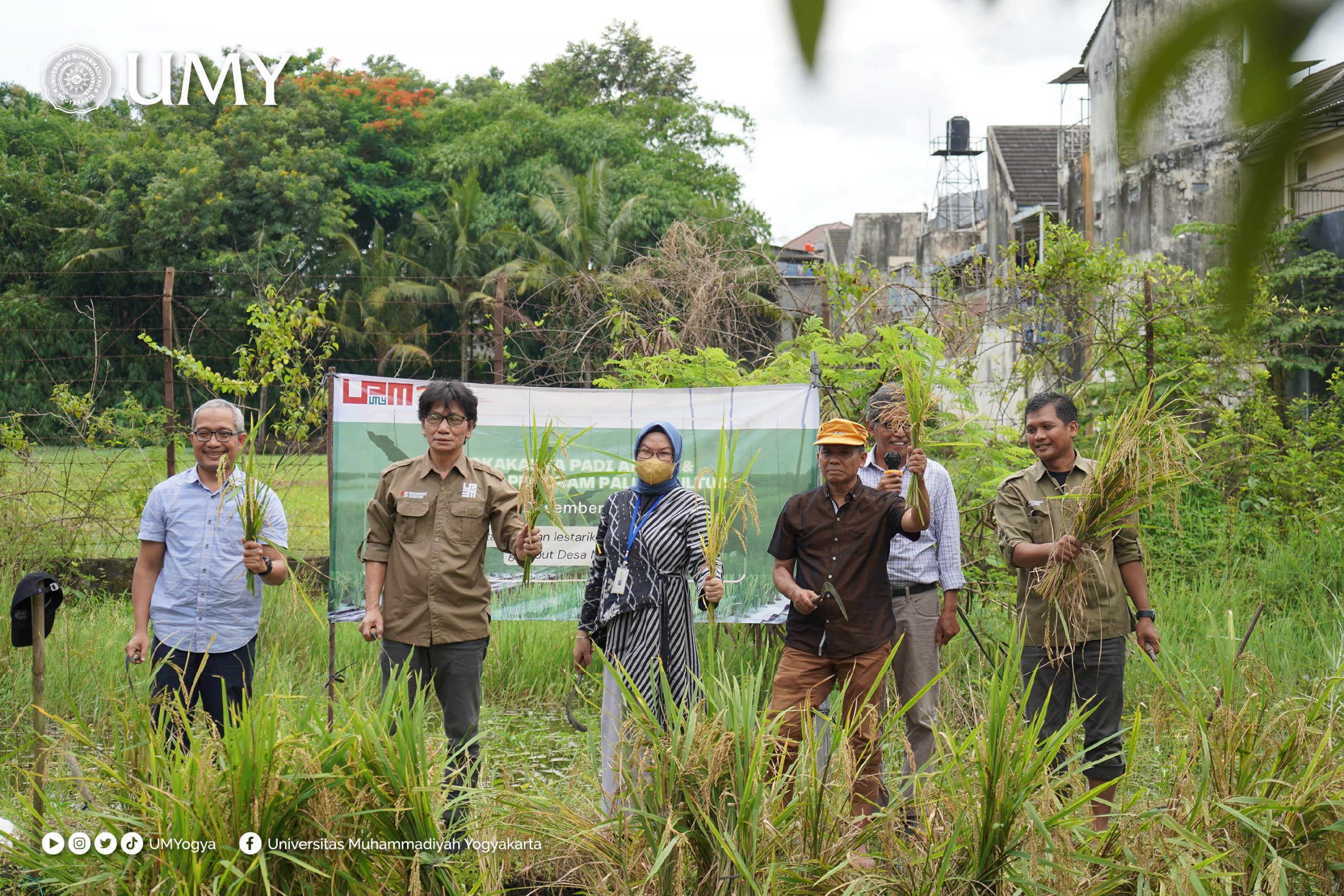The
Universitas Muhammadiyah Yogyakarta Community Service Institute (LPM UMY) conducted a joint rice harvest on Wednesday (04/01) at the Green House of the UMY Faculty of Agriculture. The rice harvest this time is different from any other rice harvest events, as in this event LPM UMY presented a demonstration of their floating rice field. Before harvesting rice on UMY's agricultural land, LPM UMY had conducted community service in Muhuran Village, Kota Bangun District, Kutai Kartanegara and Minta Village, West Kutai, East Kalimantan with this technology.
According to the head of LPM UMY, Dr. Ir. Gatot Supangkat, MP, IPM., ASEAN. Eng. the people of Minta and Muhuran villages often experience crop failures so their paddy and rice production is not optimal. “When we came there, residents complained about crop failure and suboptimal rice production. Residents took advantage of the receding swamp area as rice planting land. However, this land often gets overflowed by the Mahakam river, and as a result the rice is submerged in water, which results in crop failure," said Gatot.
Gatot also said that the agricultural sector is very vulnerable to climate change, especially rain intensity because it affects cropping patterns, planting time, production, and yield quality. "High and erratic rain intensity results in agricultural land experiencing flooding or waterlogging, therefore an innovative technology is needed to improve our agricultural system. One of the innovations in cultivation technology on flood- and swamp-prone land is by implementing the floating farming system that UMY has developed," he continued.
He also claims that this technology is very suitable to be applied in the village of Muhuran and Minta village which have areas that are essentially swamps. "This technology is very suitable to be implemented in flood-prone or swamp-prone areas such as in Muhuran village and Minta village. This technology can improve production and income for farmers, because there is an increase in the economic value of the land. Of course, the floating rice farming system is a solution to overcome and optimize the use of flood-prone and swamp-prone land conditions," he said.
Meanwhile, Rector of UMY Prof. Dr. Ir. Gunawan Budiyanto MP, IPM., ASEAN. Eng. explained that the technology that has been developed by UMY uses local resources. “The technology we have developed uses 100% local resources. This is also a distinct advantage for the preservation of the technology so that when the service team are finished with their task, the community is still empowered. The locals can source raw materials for making tools and fertilizers from local resources" he said.
Gunawan also revealed that this floating agricultural land utilizes peat land in swamps which often gets overflows from the Mahakam River. He emphasized that peatland has a myriad of benefits for agriculture, but can also have a negative impact on the climate. “What we use as agricultural land here is peat land. Peat is very useful for agriculture. However, if this land is not managed properly, it will have a negative impact for the environment and also the climate," he explained.
Gunawan further explained that peatlands can store up to 30 percent of the world's carbon so that it is not released into the atmosphere. If this carbon is released, it will result in climate change and natural disasters. This is also the reason one cannot cultivate peatlands haphazardly.
Gunawan also emphasized that this Project is a part of UMY's effort of implementing one of the Sustainable Development Goals program to end hunger (Zero Hunger). "With the use of this land as a medium for planting rice, we hope that it will advance the Zero Hunger SDG program," he continued. Furthermore, LPM UMY will carry out a similar service in the city of Pekalongan, which has the same problem with their rice harvest.
